8/1/2019
Sensational New Shrubs
Dr. Matthew Chappell
What can be a better summer horticultural reprieve than looking into some of the newest woody plant introductions for fall 2019-2020? Well, there’s always a trip to the Galapagos, but I’m betting you’re as financially deprived as I am, so you’re not picking that option.
Since we’re likely in the same boat, I reached out to many of the branding companies and a few public (university) breeding programs to see what’s coming in fall 2019 into spring 2020 that we can get excited about.
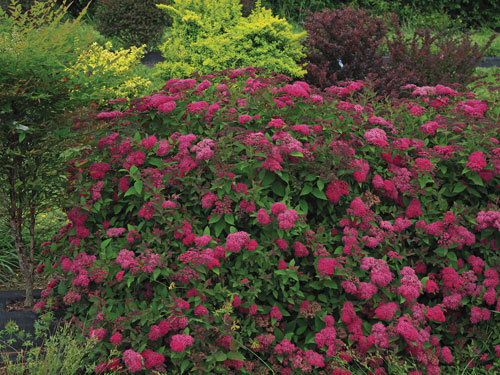
Spiraea Double Play Doozie (
Spiraea hybrid)
Proven Winners
The use of spiraea as an ornamental dates back to the late 1800s, which
is a testament to its toughness in neglected landscapes and hardiness
from Zones 3 to 8, where most Americans reside. Over the years, many excellent cultivars have been released, yet we’ve now been granted a breakthrough thanks to the efforts of Dr. Tom Ranney at North Carolina State University.
That breakthrough is the first sterile and reblooming spiraea! Originally developed as an infertile triploid to prevent reseeding, it just so happens to be remontant flowering as well. Reblooming sometimes is a consequence of infertility, as the plant keeps trying to make seed (and hence blooming). Flowers of Double Play Doozie are a bright radical red, starting in early spring and repeating in waves through summer and fall. It has an upright, 3- to 4-ft. rounded form and can be grown as a small hedge, in a mass or integrated into mixed plantings.
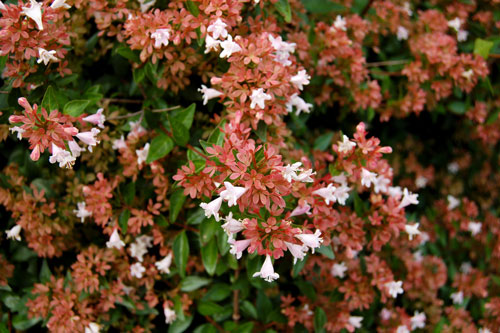
Rosy Charm Abelia (
Abelia hybrid)
Gardener’s Confidence
Rosy Charm is in the newly established Gardener’s Confidence Charming Abelias series and isn’t bashful when it comes to blooming! In fact, for those who know Abelia chinensis, imagine that species with a more compact habit (8-ft. rounded shrub, yet able to be pruned to maintain size) and a bloom with some color (no offense to white flower lovers!).
This early-blooming abelia, developed by Dr. Carol Robacker at the University of Georgia and licensed by Gardener’s Confidence, is covered in fragrant, red-purple flowers, starting with a huge flush in May and thereafter decent blooming until frost. It has all of the reliable performance qualities that make abelias a popular landscape plant: drought tolerance, deer resistance and the ability to handle heat. Also, it’s one of the more cold-tolerant abelias on the market (Zone 6b) and much easier to propagate than most abelias on the market. Oh, and did I mention abelia is a pollinator magnet, particularly butterflies. What’s not to like?
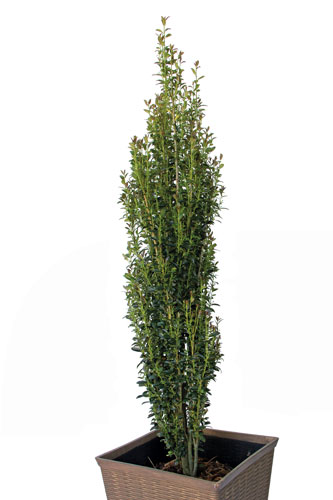
Jade Lance Japanese Holly
Gardener’s Confidence
Jade Lance is in the Gardener’s Confidence Aim High Hollies program and has a tight, vertical habit that creates a strong accent. Standing in as an upright-growing holly that, unlike some fastigiate cultivars, lacks the tendency to flop open in bad weather. (Thank goodness for that trait because the upright hollies sorely need cultivars with structural integrity.)
This holly, developed by Dr. John Ruter at the University of Georgia and licensed by Gardener’s Confidence, has burgundy-flushed new growth, maturing to a glossy, deep green that makes this selection a real statement piece in the landscape. It can be maintained as a 10-ft. high x 2-ft. wide size or allowed to mature to 15-ft. high x 3-ft. wide. As with all hollies in the Aim High series, it’s resistant to spider mites and hardy between Zones 6b to 9b.
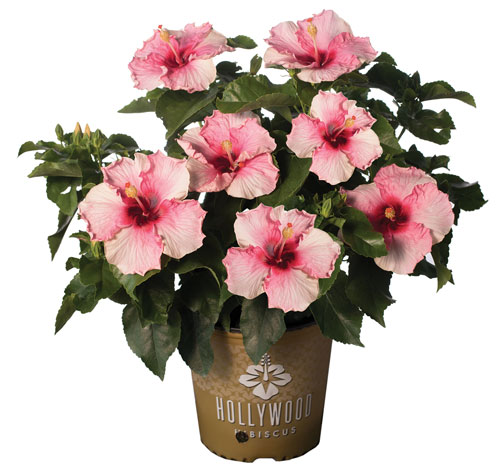
Trophy Wife Hollywood Hibiscus (
Hibiscus rosa-sinensis)
J. Berry Nursery
One must give credit to Jim Berry and his gang of intrepid marketing minds for coming up with the marketing behind the Hollywood Hibiscus series, which includes a personality test to determine which cultivar is best for you (Google it—I’m serious!).
However, the series as a whole is worthy of praise, as the Hollywood series is known for toughness in the landscape, consistently high bud counts, durable and multi-day lasting flowers, bacterial leaf spot and white fly resistance, and compact habits.
Trophy Wife is the latest introduction in the series and has pink ruffled blooms with even deeper pink centers. Appropriate for landscape and container gardens due to tolerance of both moderately damp and very dry soils, its use is very similar to the same Hibiscus rosa-sinensis found in your great-grandmother’s garden.
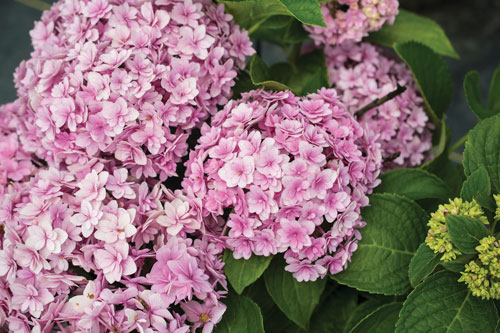
Double Down Hydrangea (
Hydrangea hybrid)
Star Roses and Plants
It’s pretty tough to find something unique in the mophead hydrangea realm these days and yet it seems Star Roses and Plants has done it. Not only does this variety rebloom, but its individual florets are a hose-in-hose double that start in late spring/early summer and persist through early fall. This effect gives flowers more volume and depth (like my wife’s hair on an August afternoon).
Pink, star-shaped flowers gain shades of green as they age (also like my wife’s hair, due to spending every day at the pool). Double Down maintains a compact, 4-ft. rounded habit, making it perfect for small gardens and containers. Hardy to Zone 6b, like most mophead hydrangeas it’s best to place them in as much sun as possible without causing sunscald to the foliage. In Zone 6b and the Pacific Northwest, you may get away with full sun, whereas along the Gulf States and Southwest, afternoon shade is pretty much a requirement.
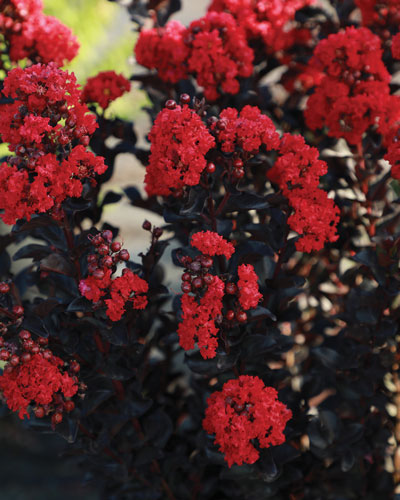
Radiant Red Black Diamond Crapemyrtle (
Lagerstroemia hybrid)
J. Berry Nursery
The insurgence of purple-foliage crapemyrtles continues, with cultivars across the board showing more vigor than early purple-foliage releases a decade ago. Radiant Red represents the tenth addition to the Black Diamond Crapemyrtle series (each a little better in my opinion). Like all crapemyrtle, Radiant Red is both drought and heat tolerant, and capable of use in containers or in a variety of garden spots that receive full sun. A naturally vigorous growing habit with large dark purple (appearing black in sun) foliage and profuse red flowers, it’s a worthy addition to the series.
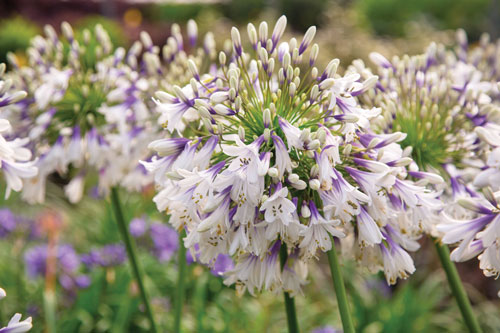
Ever Twilight Agapanthus (
Agapanthus hybrid)
Sunset Western Garden Collection/Southern Living Plant Collection
I’m pretty sure we all know agapanthus and it’s hard to argue this antebellum plant isn’t making a serious comeback. However, when I first saw this cultivar, I was stopped cold in my tracks. Why? Because it has striking white blooms with a violet throat that, against clean foliage, presents a soothing contrast of colors. It’s called a semi-dwarf in marketing materials, but it’s not noticeably smaller than most cultivars on the market today, reaching a height of 18 to 24 in.
One thing to note is that it’s listed as hardy to Zones 8b-10, which is less hardy than other cultivars on the market. Nonetheless, if you’re in that hardiness range, you won’t be disappointed by this beauty.
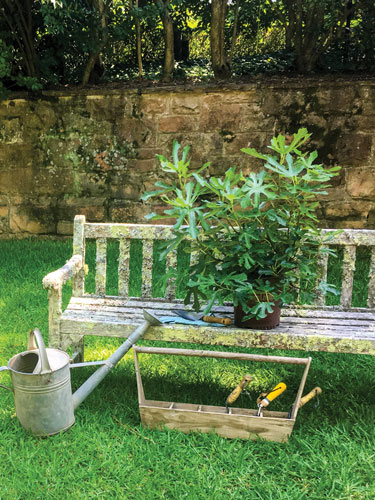
Little Miss Figgy Dwarf Fig (
Ficus caria)
Southern Living Plant Collection
I’ve written about this new cultivar in the Nursery & Landscape Insider newsletter (BTW—you should subscribe, we have fun), yet it deserves a mention here as well. From what growers are telling me, the edible (woody) plant market isn’t increasing tremendously as it was in 2009-17, but it isn’t slacking off either. That means there’s still room for new cultivars, particularly those with novel (new) traits.
With a compact habit of 6 ft. in height, Little Miss Figgy is much smaller and more cold hardy (Zone 7) than most fig cultivars, yet it bears prolific fruits in late spring/early summer and again in fall. It also has unique foliage that remains clean throughout the season and deep burgundy fruits with a sweet center. As with all figs, you need to place Little Miss Figgy (I do love that name) in full sun.
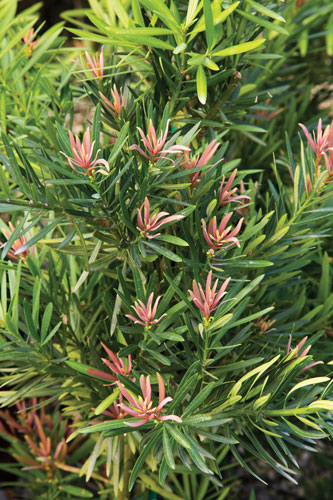
Mood Ring Podocarpus (
Podocarpus macrophyllus)
Southern Living Plant Collection
Podocarpus is one tough plant, typically thriving in Zone 7b to 10 in dilapidated landscapes such as road medians and parking lot plantings. Being that most gardens resemble this description, it’s always nice to see new cultivars that add a little spice to the typically available cultivars. In the case of Mood Ring, this easy-care beauty sports bronzy-pink new growth that turns green as it matures. Mood Ring also brings to the table disease, pest and deer resistance, and it tolerates full sun and heat. Evergreen and with an upright habit, it works great as a privacy planting or an accent, having a mature size of 10- to 15-ft. tall by 4- to 6-ft. wide.
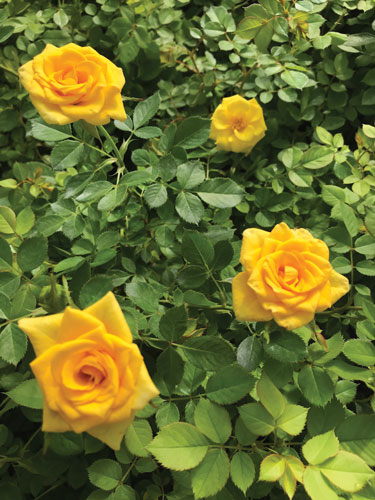
Brindabella Vista Rose (
Rosa hybrida)
Suntory Flowers
When I first spotted Brindabella Roses, my first thought was: “Does the world need another reblooming rose cultivar?” Then I smelled it and thought, “Why, yes, I think this will do nicely.” Brindabella Roses have brought to market the reblooming ability of Knockout Roses with a fragrance more fitting the hybrid tea roses, in addition to a fuller habit compared to many reblooming roses on the market today. It’s an outstanding combination, worthy of some serious praise.
What’s been missing from the Brindabella lineup is a true yellow-flowering cultivar. Problem solved, as Vista Rose brings the same traits of fragrance and full habit to the series with a canary-yellow bloom. Plant size and hardiness is in line with other Brindabellas, having a 4- to 5-ft. rounded habit with a hardiness range of Zone 5 to 9/10.
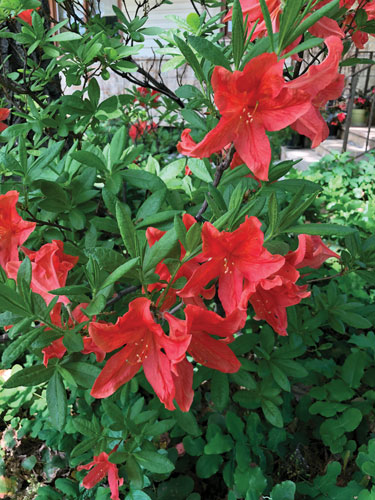
Fireflare Orange Mollis Azalea (
Rhododendron x kosteranum)
North Dakota State University
Do you think you can’t grow azalea in Zone 3 or in a soil with a pH of 8.2? No? Well, think again, folks, because Dr. Todd West continues the tradition of his predecessors at North Dakota State University by releasing the plants that bring joy to the masses of the great north (down to Zone 6).
In the case of Fireflare Orange Azalea, one must reach way back to find its origins as a single plant selection originating from a hybrid Mollis azalea seedling population grown out in beautiful Fargo, North Dakota, in the early 1970s. That’s right, folks, this NDSU deciduous hybrid azalea cultivar has proven winter hardy (to -36F) for over 40 years and is high pH tolerant to boot with no exhibition of chlorosis symptoms in alkaline pH soils.
Fireflare Orange blooms are truly an eye-stopper, with brilliant fire-orange color on deciduous plants that leaf out in early spring and bloom in mid/late spring. While the azalea market isn’t huge in Zones 3 to 6, I can guarantee every northern garden needs one of these! GT
Matthew Chappell is a professor at the University of Georgia and editor of our Nursery & Landscape Insider e-newsletter.